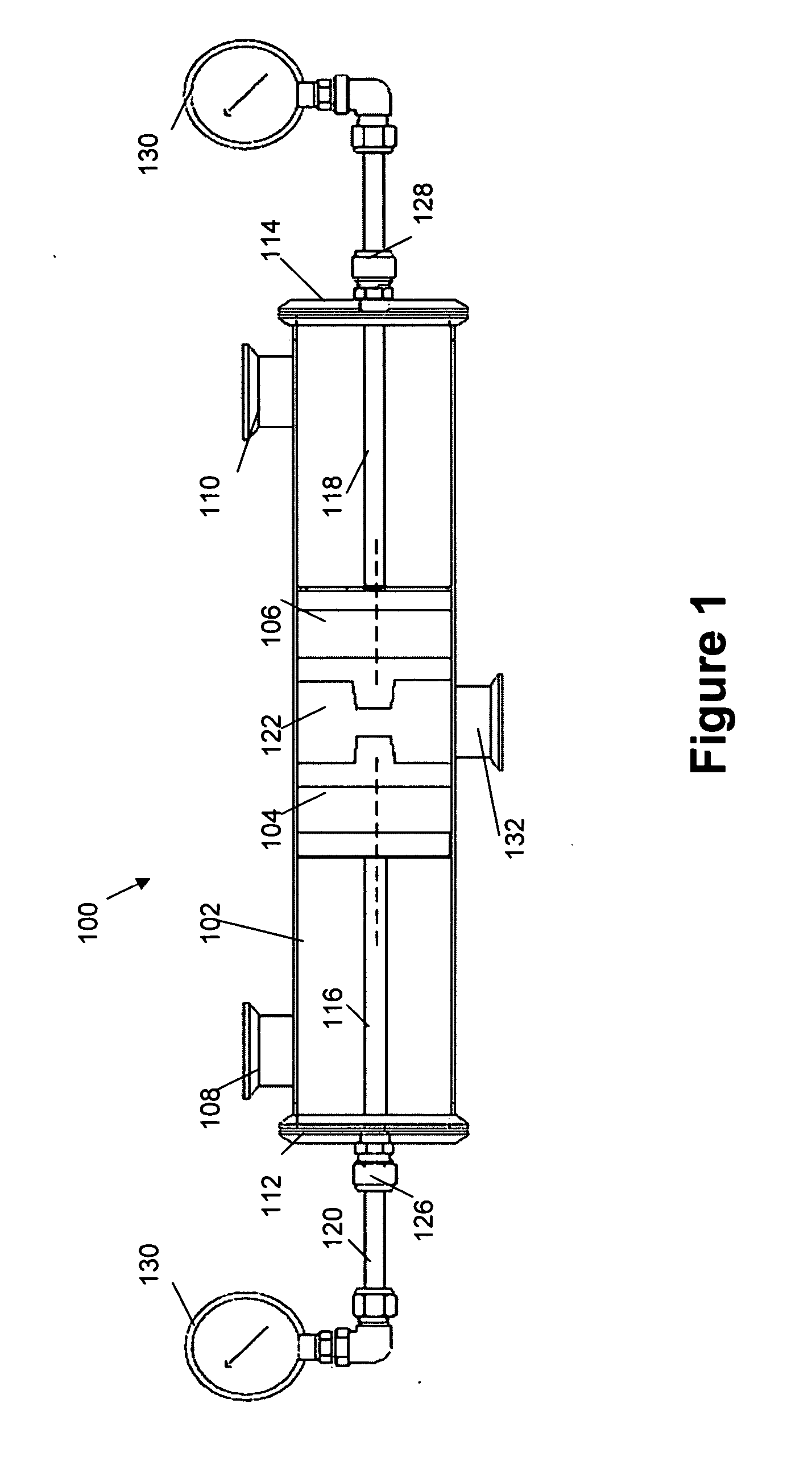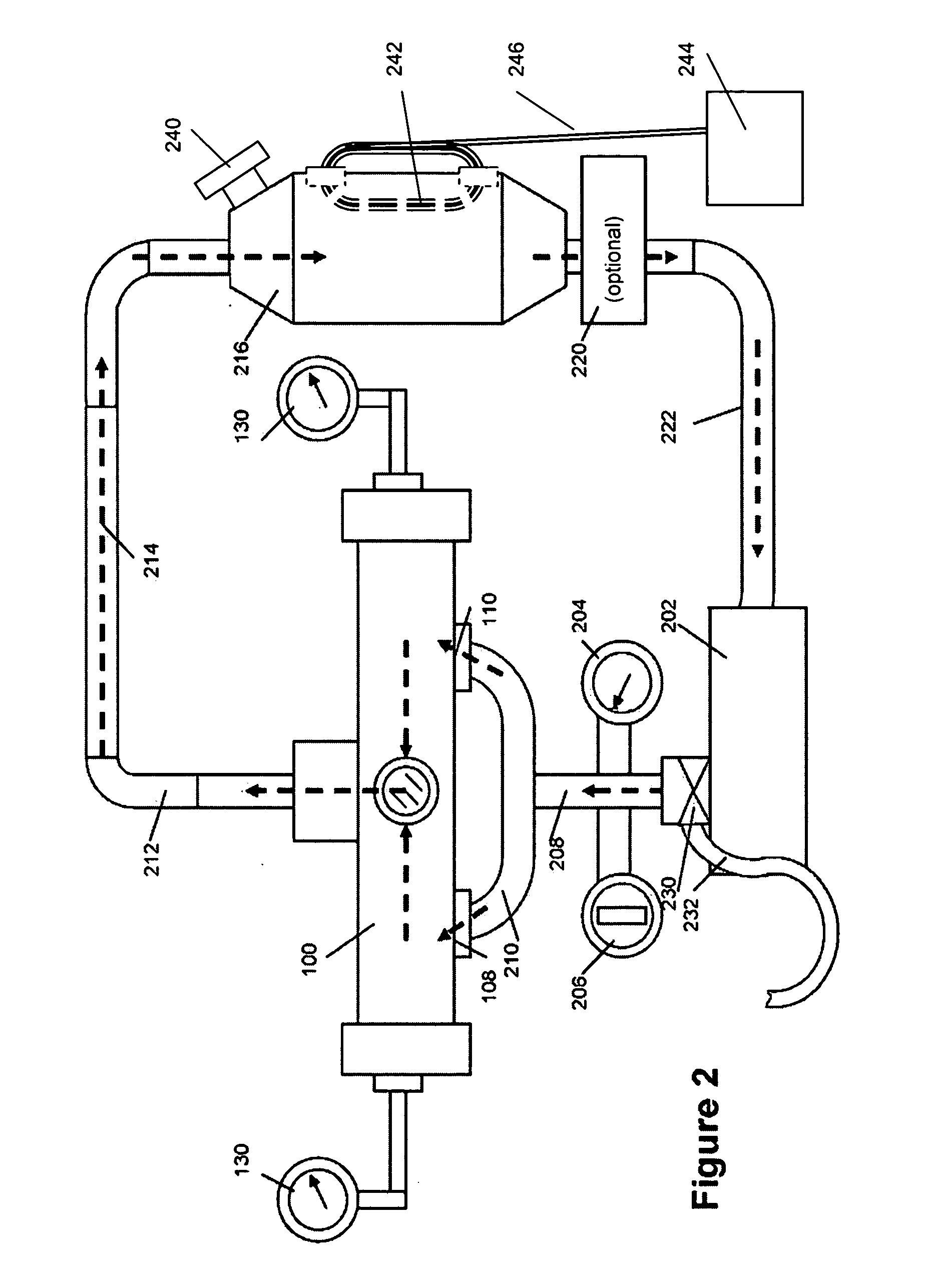Device and method for mixing liquids and oils or particulate solids and mixtures generated therefrom
a technology of liquid and oil, which is applied in the direction of mixing, transportation and packaging, chemical instruments and processes, etc., can solve the problems of increasing heat and breaking the bonds holding large fluid arrays together, mixing liquids, and generating additional cavitational energy, so as to achieve sufficient acoustic energy and increase heat
- Summary
- Abstract
- Description
- Claims
- Application Information
AI Technical Summary
Benefits of technology
Problems solved by technology
Method used
Image
Examples
example 1
[0062] A mixture of 10% by volume Olive Oil in water is subjected to the cavitation process with test samples taken at 115°, 125°, 135° and 140° C. for determination of the amount of oil dissolved in the water. The maximum amount was 0.04 grams per 10 mL of water.
[0063] The oil in water solution has a milky white appearance with a faint Olive Oil odor. The solution was applied to the hands and arms as a lotion and was absorbed very rapidly into the skin and did not leave an oily film or feeling on the skin. The solution was subjected to centrifuge at 12,000 rpm for three 20 minute periods without causing a separation. The solution was further subjected to centrifuge at 20,000 rpm for three 20 minute periods, without separation or change in the solution.
example 2
[0064] 100 g of ZnO powder, 99.99% purity was combined with 20 1 of Penta® water and processed until the temperature reached 140° F. The calculated particle size, according to the Turbiscan™ device was between 0.04 μm and 0.012 μm.
example 3
[0065] The device used to generate the oil in water according to Example 1 was further fitted on the exterior thereof with a cooling jacket or heat exchange system such that, as heat was generated, it was pulled away from the outside of the device, thereby maintaining the process temperature at a desired point. The system was allowed to process for two hours at 100° F. after which the heat exchanger was removed and the temperature of the liquid was allowed to increase to 140° F. after which the device was turned off and the processed oil in water collected. The average particle size was determined to be 115 nm.
PUM
| Property | Measurement | Unit |
|---|---|---|
| Temperature | aaaaa | aaaaa |
| Viscosity | aaaaa | aaaaa |
| Distance | aaaaa | aaaaa |
Abstract
Description
Claims
Application Information
 Login to View More
Login to View More - R&D
- Intellectual Property
- Life Sciences
- Materials
- Tech Scout
- Unparalleled Data Quality
- Higher Quality Content
- 60% Fewer Hallucinations
Browse by: Latest US Patents, China's latest patents, Technical Efficacy Thesaurus, Application Domain, Technology Topic, Popular Technical Reports.
© 2025 PatSnap. All rights reserved.Legal|Privacy policy|Modern Slavery Act Transparency Statement|Sitemap|About US| Contact US: help@patsnap.com



